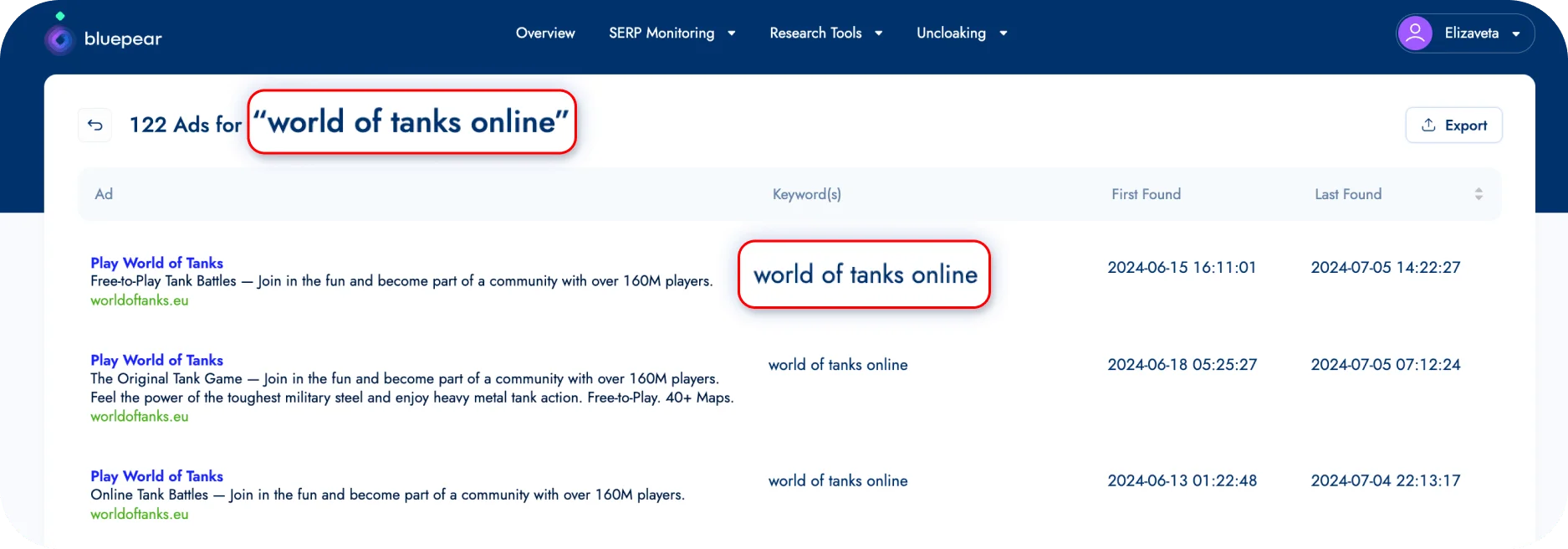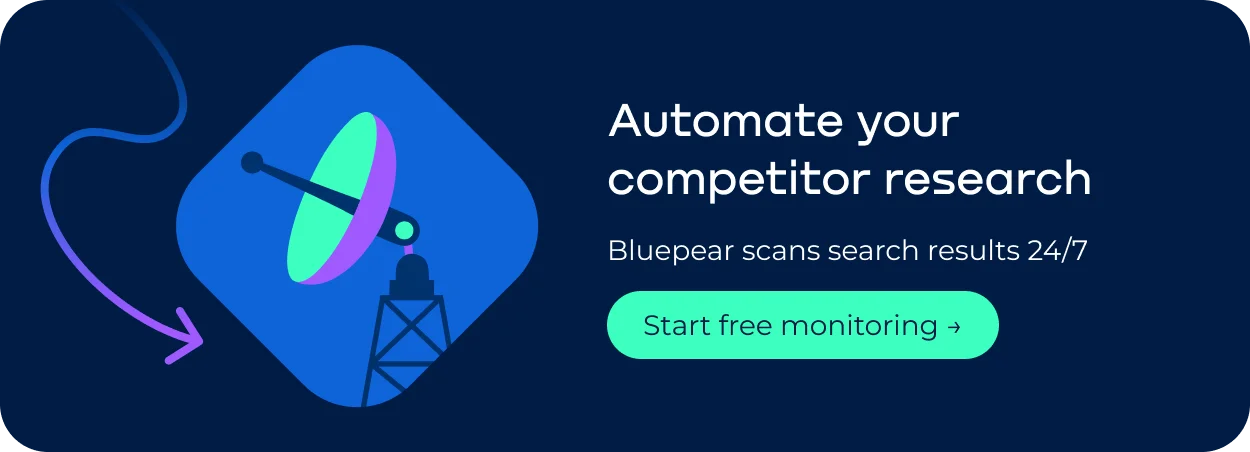
Contents
Search results are a constantly evolving landscape. Ads generally have a lifespan of about two weeks. During this time, they perform well in Google Ads, but eventually, they «burn out» and need adjustment based on their effectiveness.
Every day, new competitor sites emerge, and not all of them play fair. Often, unknown brands mimic the appearance of established ones, confusing users and potentially harming the original brand's reputation.
For competitive niches, it’s critical not only to conduct regular online competitor analysis but also to monitor the search results continuously. A huge help here will be competitor analysis tools.
What’s Behind It
How do potential customers often get to know your brand? Correct, they google it. For most people, it’s their first interaction with the brand — via search results.
What can you gain by regularly monitoring search results through online competitor analysis?
- 1. Insights into your brand’s competitors in both paid and organic search.
- 2. Important keywords — those that you both use, as well as any you might be missing.
- 3. Information on websites that rank for the same keywords and how they stack up against yours.
- 4. A list of CTAs that similar brands are using so you can compare the appeal of your offers
- 5. The frequency of your ads' appearance for specific queries.
It's also important to monitor changes depending on the season, shifting customer needs, and other external factors, all through streamlined digital marketing competitor analysis.
Let’s explore how to automate search result monitoring with the Bluepear platform and stay informed about new developments in competitor analysis tools.
Competitor Analysis by Keywords
One part of the online competitor analysis is keyword analysis. It reveals competitors of your brand and how they show up in both paid and organic search results.
Knowing which competitors are targeting the same keywords as your brand in paid search can help you optimize your ad campaigns. You can also add keywords where your ads don’t show up, especially if competitors are using your branded terms.
While organic search is less dynamic, it's still important to track competitors promoting through related keywords using competitor analysis tools. This is especially relevant in highly competitive niches where new players can appear every day.
Understanding which keywords are used the most among similar brands, and how these trends shift due to external factors, is vital.
For example, an online competitor analysis revealed that for branded searches related to the game World of Tanks, the most common keyword among competitors is “world of tanks online.” 14 advertisers target this keyword, with World of Tanks itself showing the most ads.

Analyzing Competitor Positions in Paid and Organic Search
Another key part of competitor analysis is not only knowing who’s targeting your keywords but also understanding their ranking positions. Additionally, knowing where your brand ranks in comparison is crucial.

With Bluepear, you can track the positions of advertisers in both paid and organic search in one interface for each keyword, providing valuable insights for effective PPC competitor analysis.
Integrating Competitor Insights into Your Strategy
So, you did your competitor analysis using special tools and gathered enough data. What’s now? The real challenge is to use this information right. Try to find out what makes the strategies of your competitors work. Maybe it’s the particular keywords that are missing in your campaigns? Or perhaps, it’s the way they grab attention in their CTAs? Study it closely, and you will have enough information to test and adjust your campaigns.
Also, monitor trends over time. Digital marketing is like a dance — the steps are always changing, and what leads today might be out of sync tomorrow. If you want to stay ahead, go back to your competitor analysis from time to time. Compare what has changed, what has stayed the same. Try to predict what can come up next and adjust your strategies — if it’s necessary, of course. With such a proactive approach you’re not just reacting to changes — you are anticipating them.

Ad Copy Analysis
If search results are often the first touchpoint with a brand, then what shapes the first impression for potential customers? Ads. And it’s not only the attractive visuals, but also the text — in fact, it is a key factor in your PPC ads. Bare this in mind:
- • Compelling Copy: A well-crafted ad that directly addresses your audience's needs is more likely to capture attention and drive action.
- • Keyword Relevance: Including relevant keywords in your ad, particularly in the headline, guarantees your ads show up for the right searches.
- • Clear CTA: Use strong calls to action like “Buy now,” “Learn more,” or “Download today.” Analyzing competitors’ CTAs through online competitor analysis will help you understand which ones work best and how they impact clicks and conversions.
As an example, let's compare ads from two competitors: World of Tanks and Besteanglebot. Competitors often use misspelled keywords for promotion. One such case involves the query “world of thanks,” which shows ads with different CTAs. A hypothesis could be that ads using a direct CTA like “jump into free-to-play... shooter” might achieve higher click-through rates.

While this strategy isn’t prohibited, it's essential to track what CTAs your competitors are using for branded search queries to ensure your offers are equally or more attractive through detailed competitor analysis.
Why Monitoring Branded Queries Is Crucial
When a user searches for your brand, they’re already interested in learning more about it. Nothing should distract such a motivated customer.
If they spot a competitor’s ad with a better deal, they might consider switching. That’s where online competitor analysis is so valuable — by keeping an eye on competitor offers, you can make sure yours stay competitive too.
If a competitor’s ad ranks at the top, take a closer look at the elements of their ad. By having a clear view of all competitors advertising for a specific keyword, you can optimize your own ads to make them more clickable. Bluepear offers such a feature within its “Ad Analysis” section, helping you refine your digital marketing competitor analysis.

